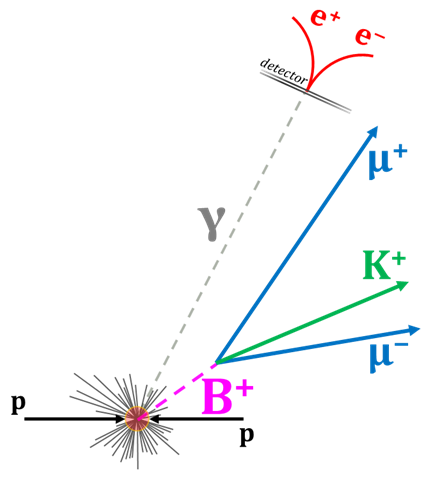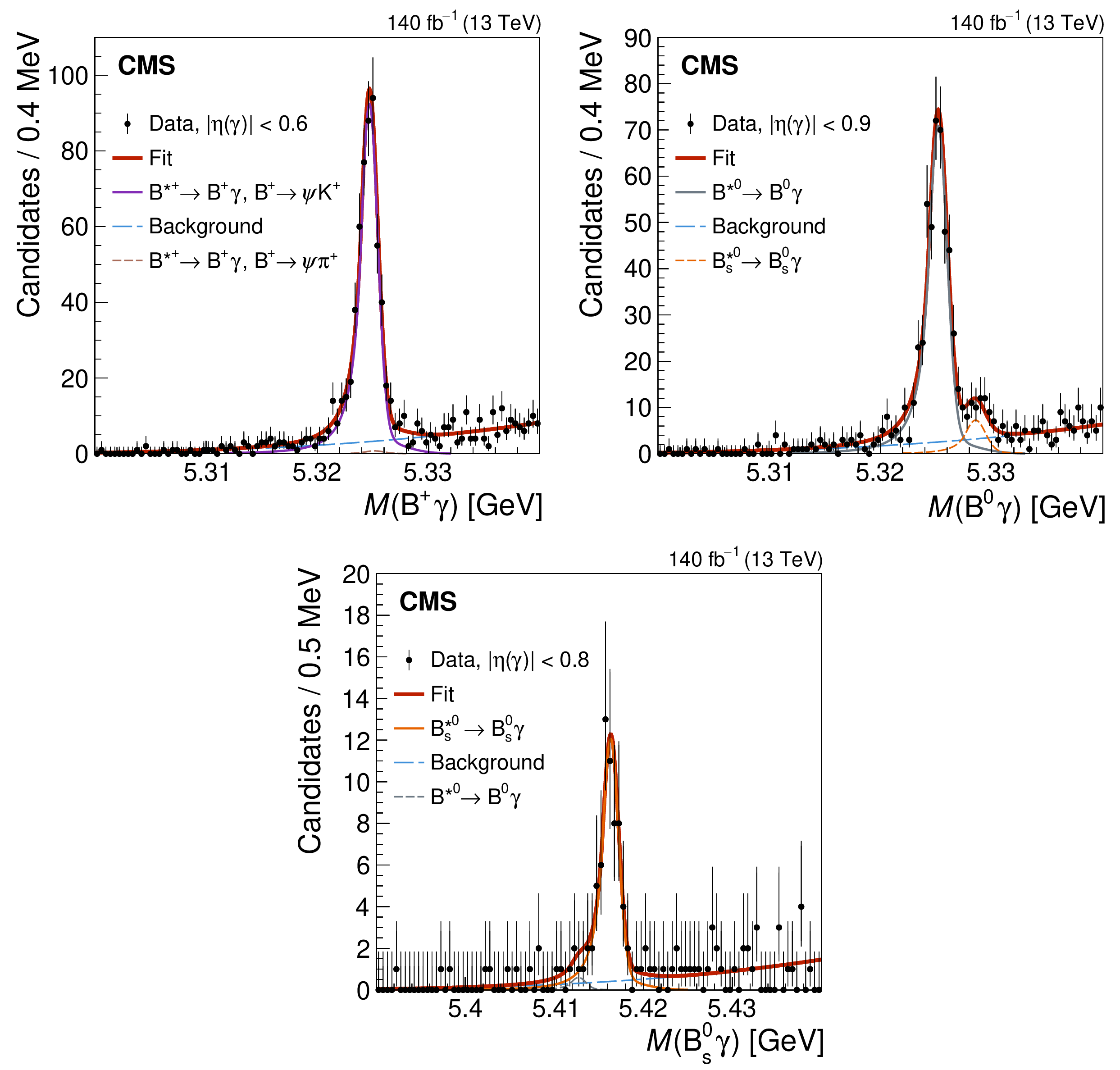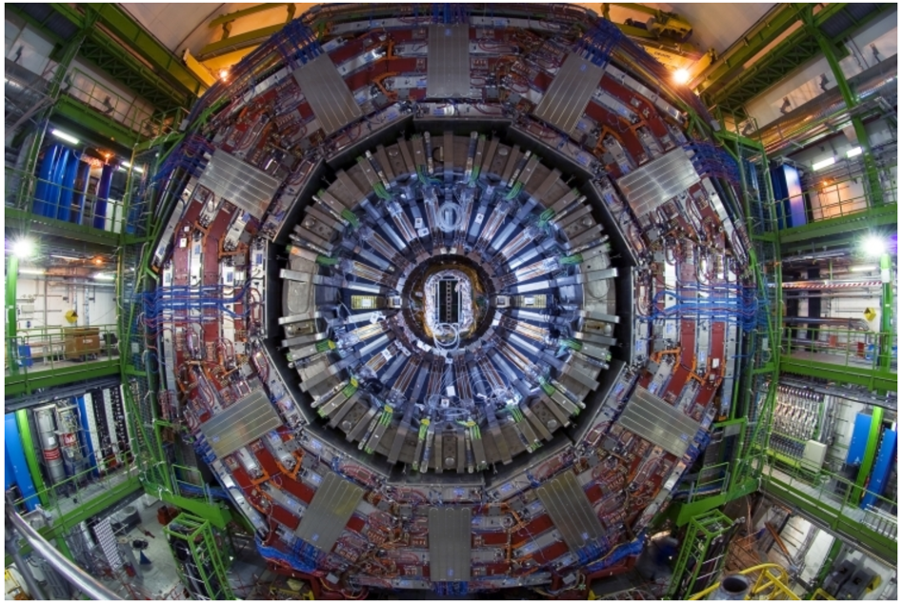
For the first time ever, the excited states of three beauty mesons are fully reconstructed and their masses are measured directly, using data from the CMS experiment.
The existence of the excited B meson states, B*+, B*0, and B*0s(also known as vector states), has been known for nearly 30 years, but they have been measured only indirectly so far. What allowed them to evade being fully reconstructed are the very-low-energy photons emitted in their decays. In a new analysis, the CMS Collaboration uses those photons that convert to electron-positron pairs in the detector material (as shown in the animation below) to reconstruct the full decay chains of the three vector B mesons. Precise measurements of excited states of beauty mesons deepen our understanding of the strong interaction, which keeps the quarks together in all hadrons, including protons, neutrons, and atomic nuclei that we consist of.

Click here for a video version of the animation
Figure 1 (below) shows the measured invariant mass distributions of B meson plus a photon, where a clear peak in each of them is seen. We also measure the masses of these states with much better precision than they were known previously:
M(B*+) = 5324.69 ± 0.08 MeV,
M(B*0) = 5325.19 ± 0.10 MeV,
M(B*0s ) = 5416.34 ± 0.18 MeV.

Figure 1: Distributions of B+ γ (top left), B0 γ (top right), and B0sγ (bottom) invariant masses showing the narrow signal peaks corresponding to the full reconstruction of the three vector mesons (B*+, B*0, B*0s, respectively).
A new energy scale calibration method, using the π0 → γγ decay reconstructed from two converted photons, was developed to improve the measurement’s precision. The analysis is based on the LHC Run 2 data, and more precise and sophisticated measurements will be possible using data from the ongoing Run 3!
Written by: Sergey Polikarpov, for the CMS Collaboration
Edited by: Andrés G. Delannoy
Read more about these results:
-
CMS Physics Analysis Summary (BPH-24-011): "First fully exclusive reconstruction of radiative decays of the B*+ , B*0 , and B*0smesons and measurement of their masses in proton-proton collisions at √s = 13 TeV"
-
@CMSExperiment on social media: Bluesky - Facebook - Twitter - Instagram - LinkedIn - TikTok - YouTube

